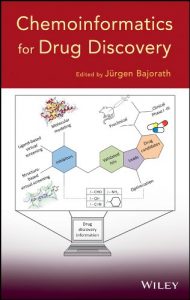Chemoinformatics strategies to improve drug discovery results
With contributions from leading researchers in academia and the pharmaceutical industry as well as experts from the software industry, this book explains how chemoinformatics enhances drug discovery and pharmaceutical research efforts, describing what works and what doesn't. Strong emphasis is put on tested and proven practical applications, with plenty of case studies detailing the development and implementation of chemoinformatics methods to support successful drug discovery efforts. Many of these case studies depict groundbreaking collaborations between academia and the pharmaceutical industry.
Chemoinformatics for Drug Discovery is logically organized, offering readers a solid base in methods and models and advancing to drug discovery applications and the design of chemoinformatics infrastructures. The book features 15 chapters, including:
- What are our models really telling us? A practical tutorial on avoiding common mistakes when building predictive models
- Exploration of structure-activity relationships and transfer of key elements in lead optimization
- Collaborations between academia and pharma
- Applications of chemoinformatics in pharmaceutical research—experiences at large international pharmaceutical companies
- Lessons learned from 30 years of developing successful integrated chemoinformatic systems
Throughout the book, the authors present chemoinformatics strategies and methods that have been proven to work in pharmaceutical research, offering insights culled from their own investigations. Each chapter is extensively referenced with citations to original research reports and reviews.
Integrating chemistry, computer science, and drug discovery, Chemoinformatics for Drug Discovery encapsulates the field as it stands today and opens the door to further advances.






